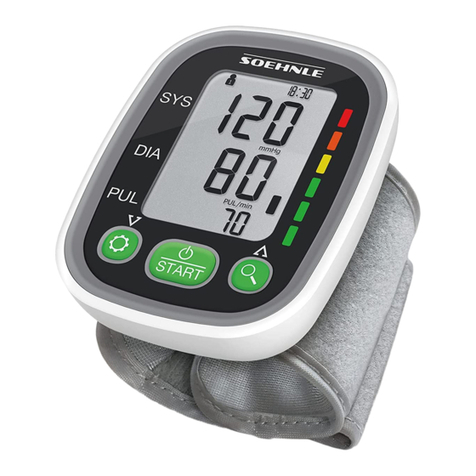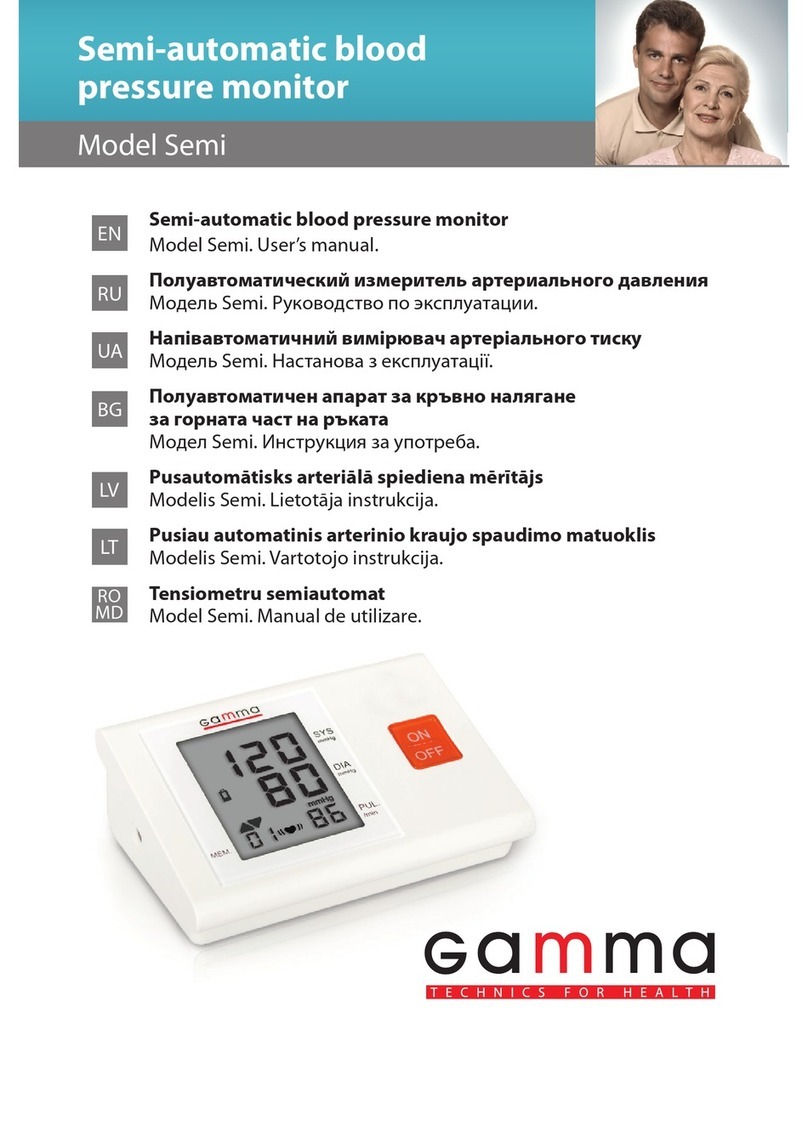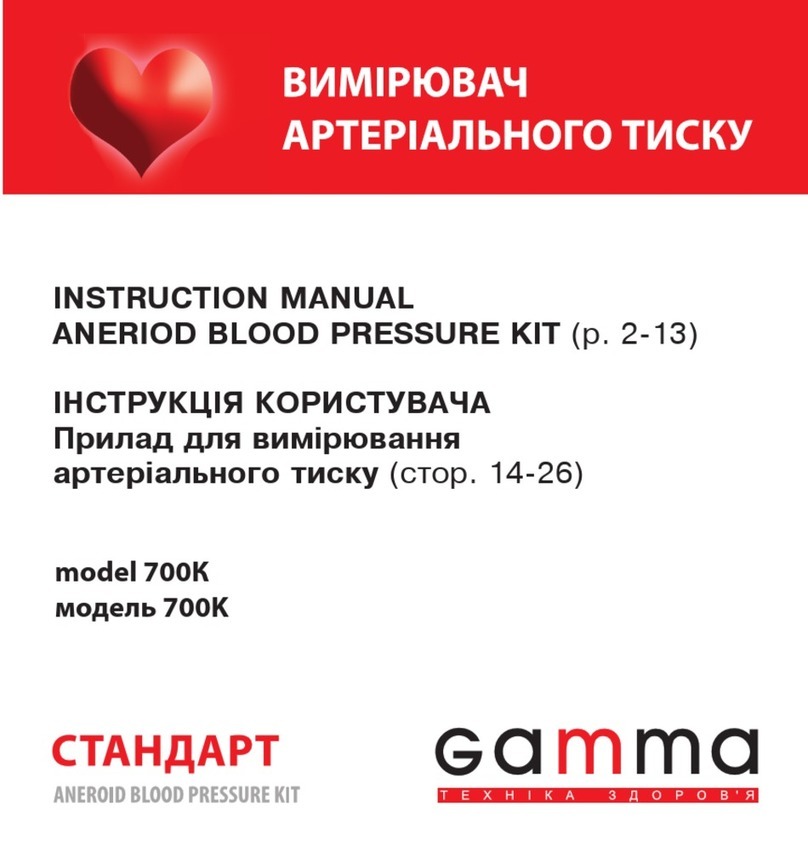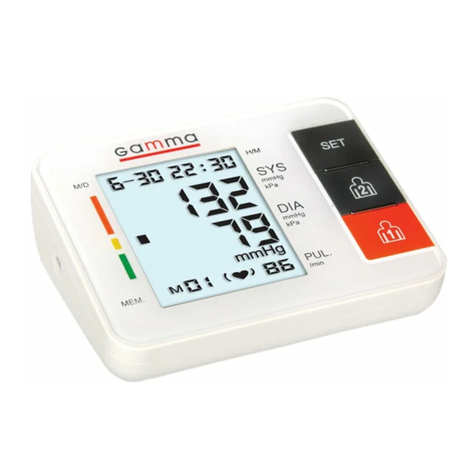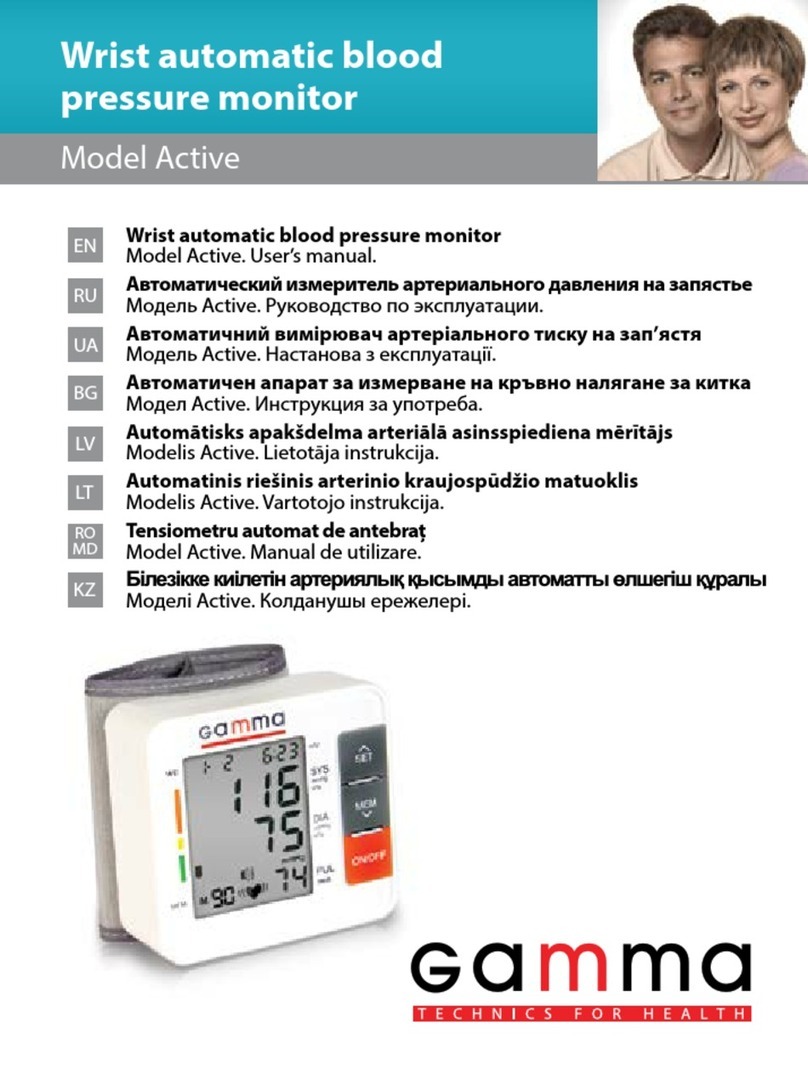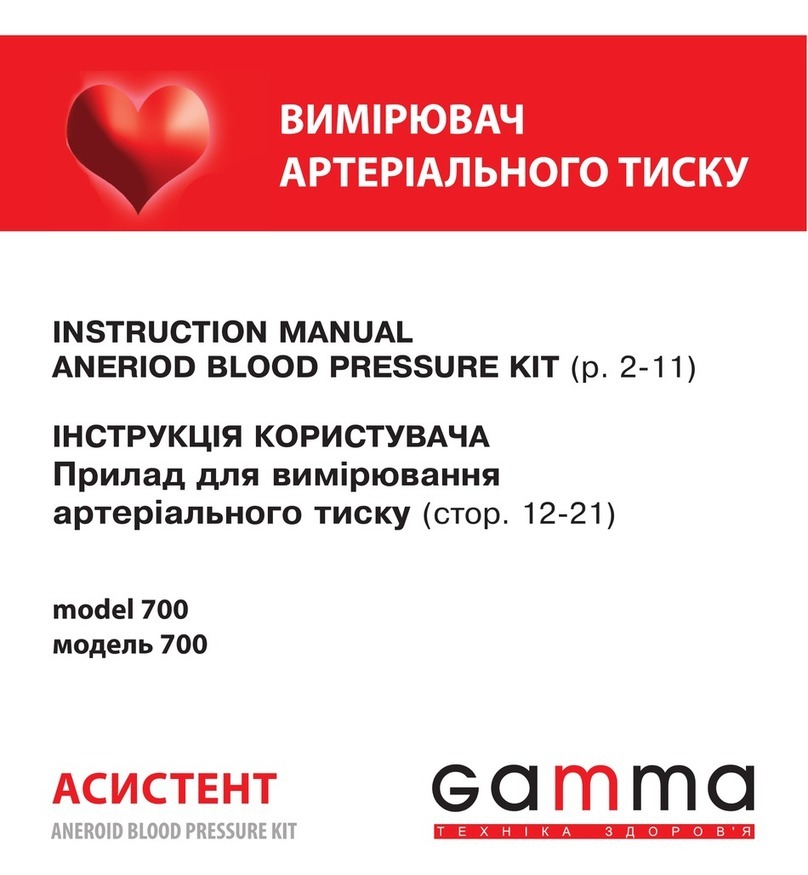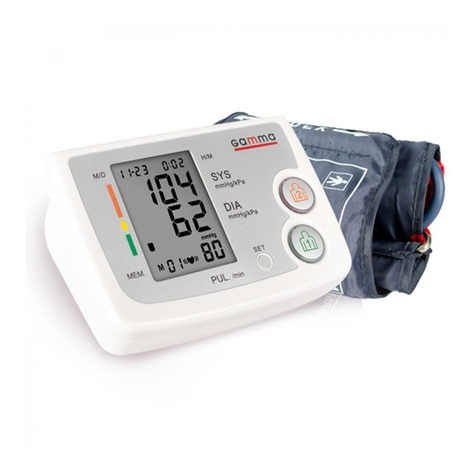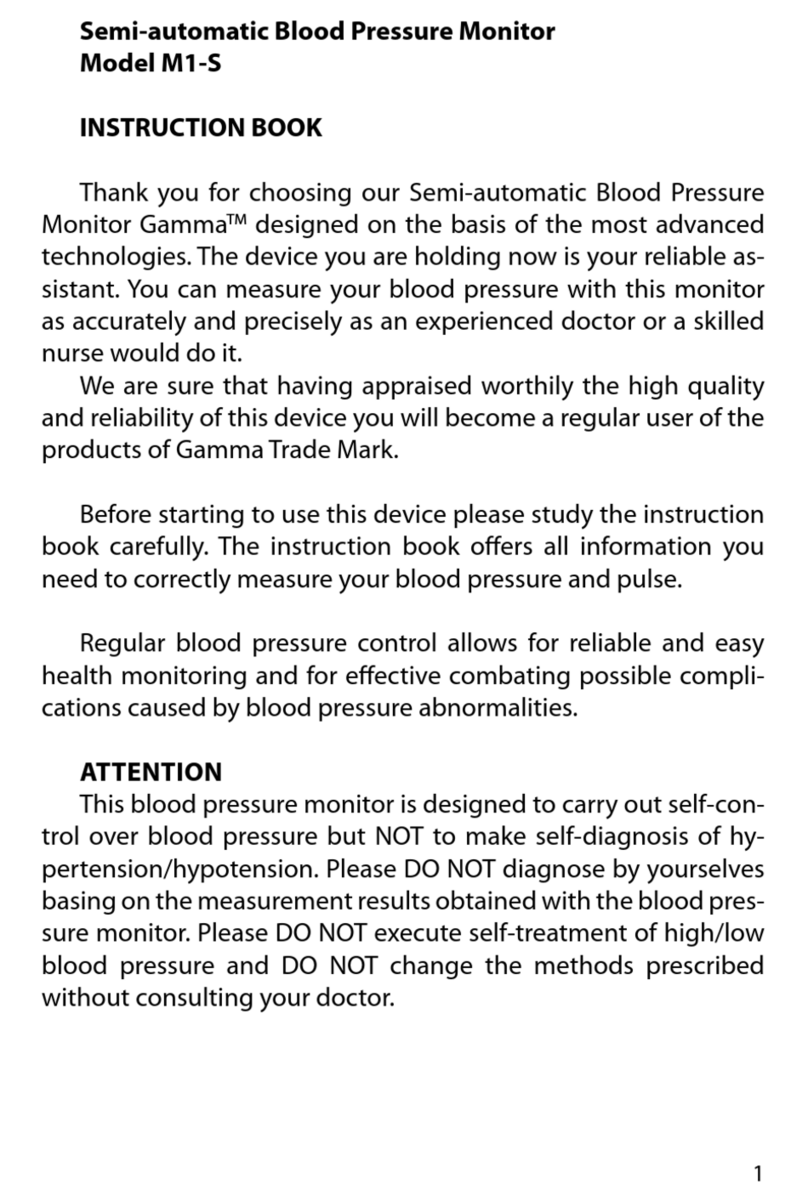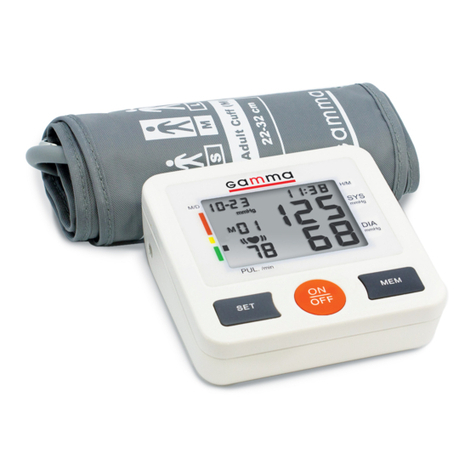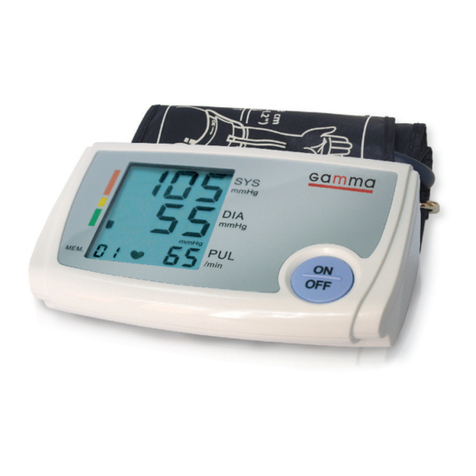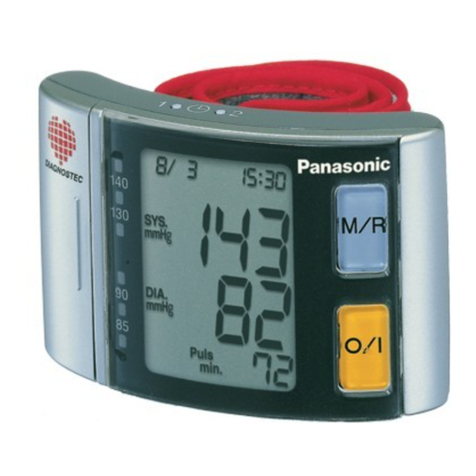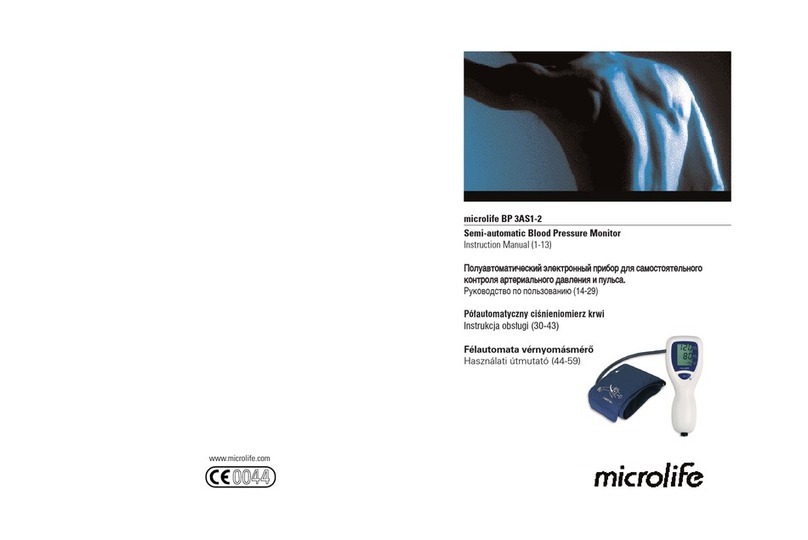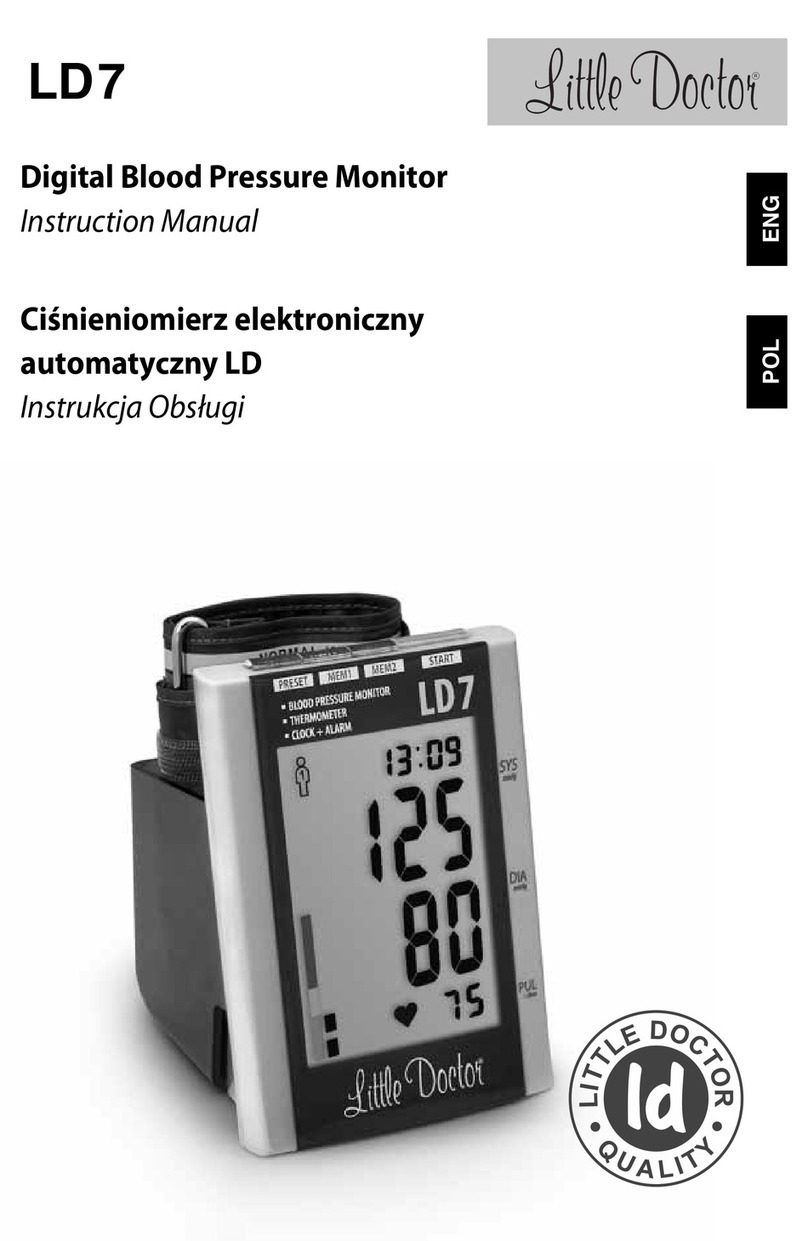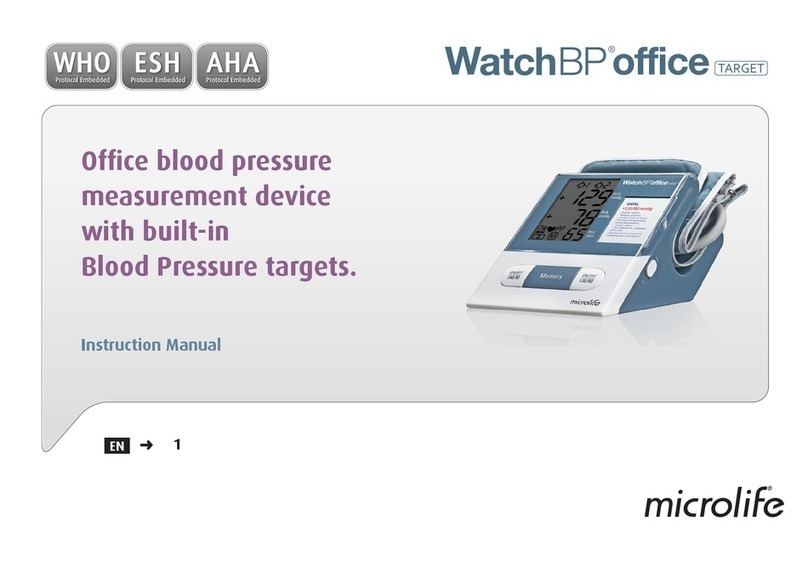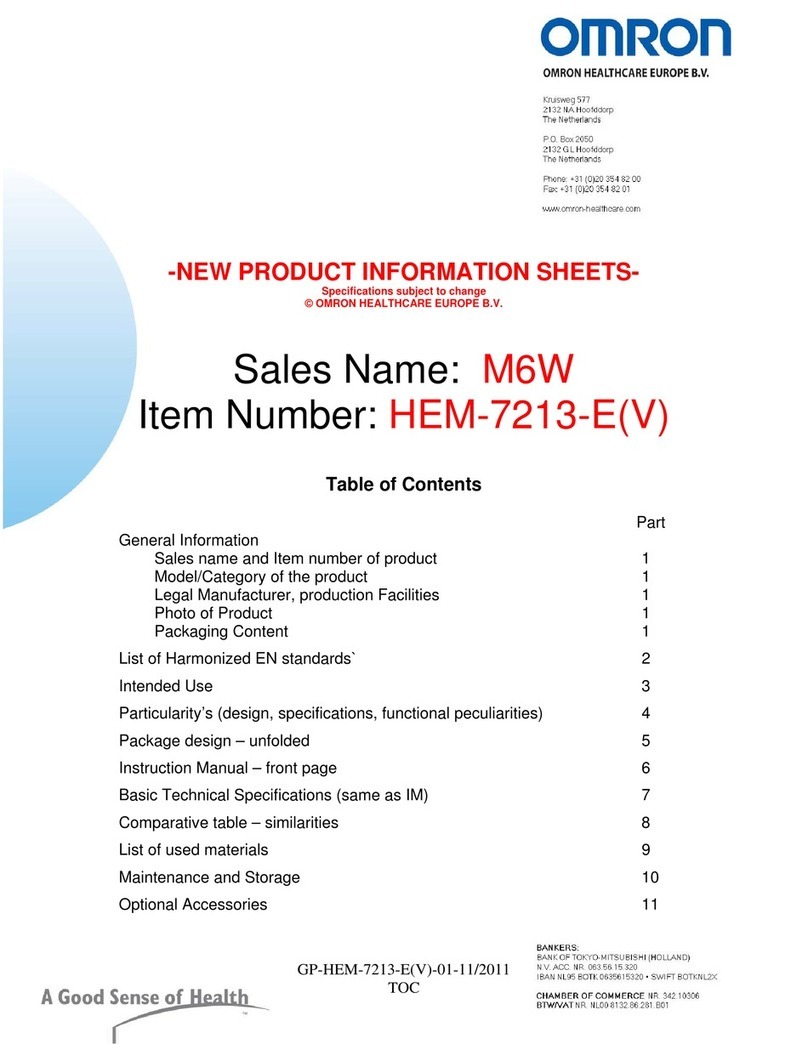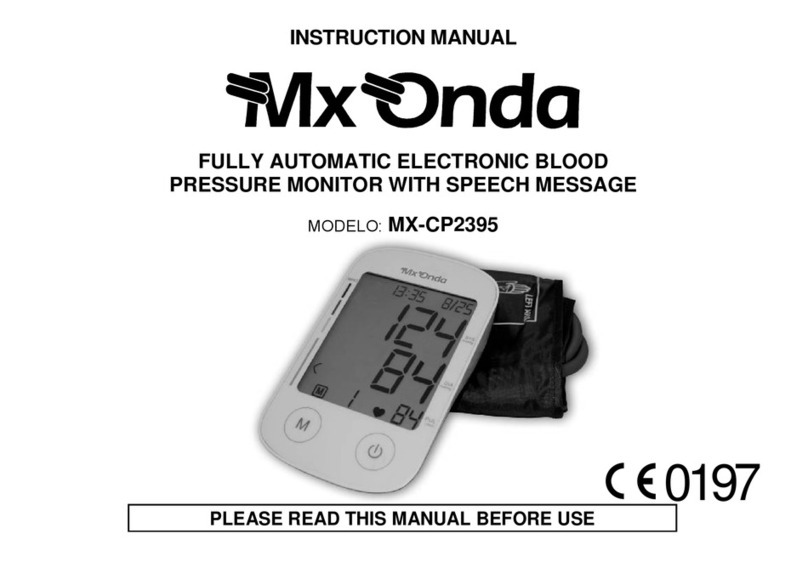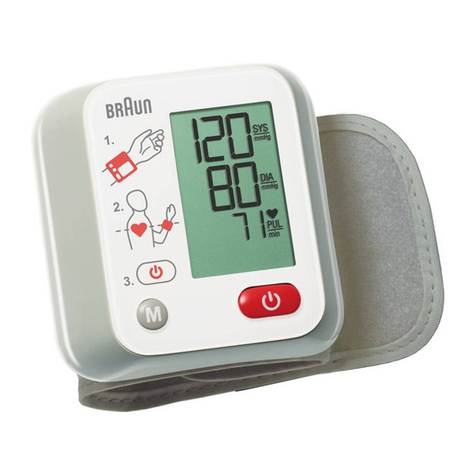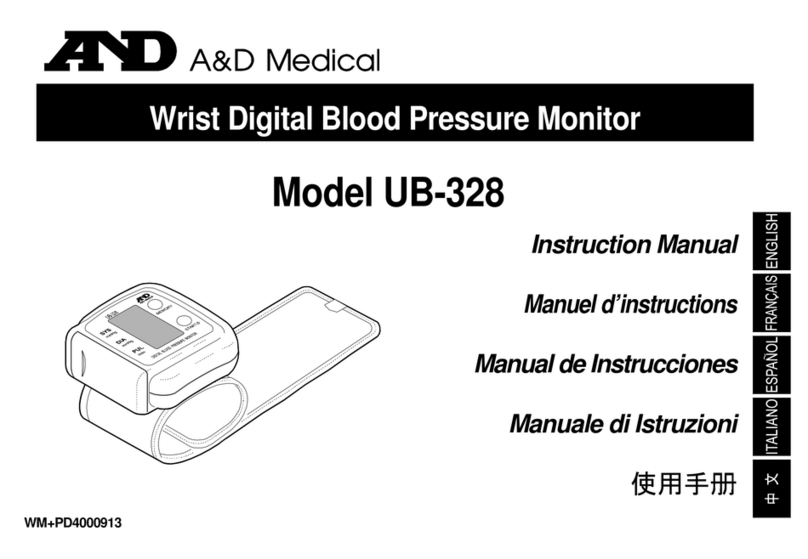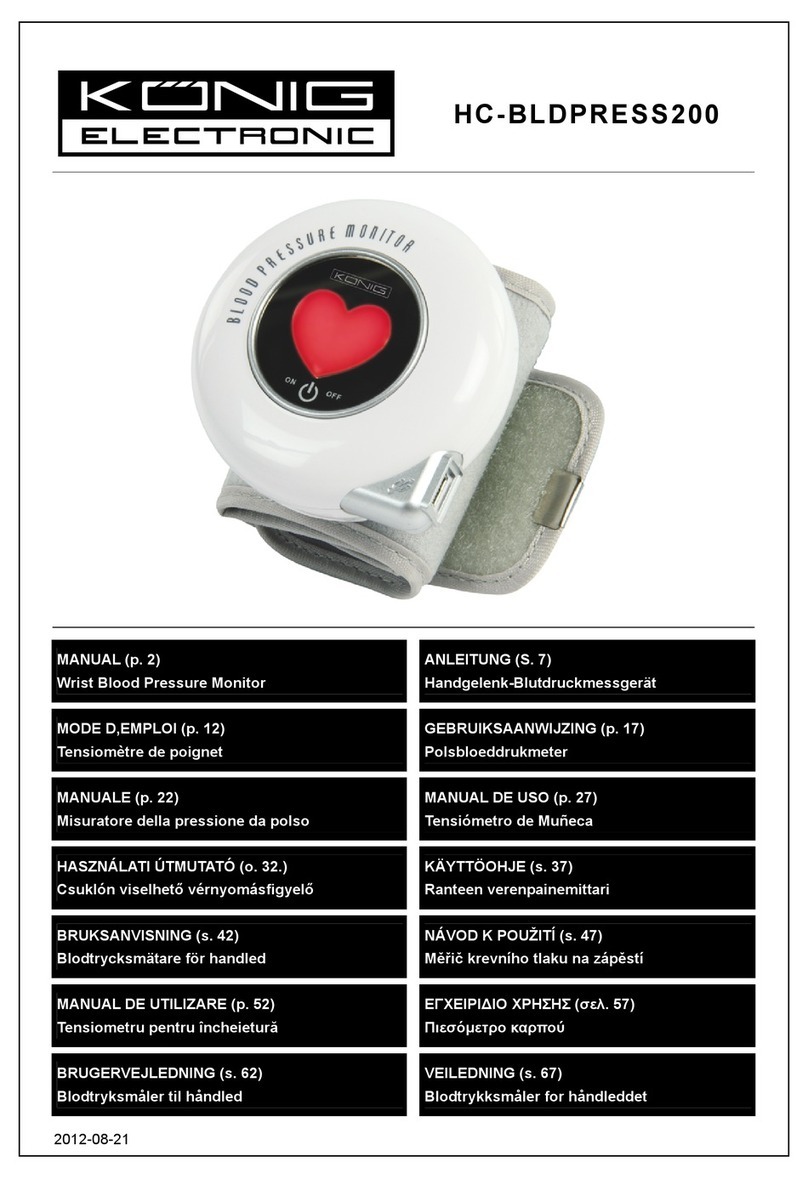
10
3.3. Reading measurement results
When the measurement has been con-
cluded, a long beep tone sounds. The meas-
ured systolic and diastolic blood pressure val-
ues, as well as the pulse are now displayed.
The appearance of this symbol sig-
nies that an irregular heartbeat was de-
tected. This indicator is only a caution. It is
important that you be relaxed, remain still
and do not talk during measurements.
Note: We recommend contacting your physician if you see
this indicator frequently.
To prolong the batteries’ life the device
switches o automatically if no button is
pressed for 1 minute. Otherwise you can
switchitobypressingtheSTARTbutton.
3.4. Discontinuing a measurement
If it is necessary to interrupt a blood pres-
sure measurement for any reason (e.g the
patientfeelsunwell),theSTART buttoncan
be pressed at any time. The device then im-
mediately lowers the cu pressure automati-
cally.
3.5. Irregular Heartbeat Detector
This function indicates allorhythmic heartbeating. If the sym-
bol of IHD appears on the display that means that certain ab-
normality in heart beat frequency was detected during the meas-
urement. In this case, the result may deviate from your normal
blood pressure – repeat the measurement. In most cases, this
is no cause for concern. However, if the symbol appears on a
regular basis (e.g. several times a week with measurements taken
SYS
blood
pressure
DIA
blood
pressure
Pulse


